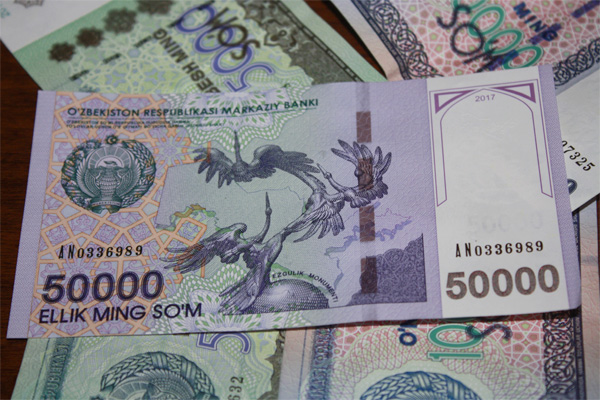
Inflation in Uzbekistan Reaches 8.7% in June 2025
Inflation in Uzbekistan Reaches 8.7% in June 2025
Tashkent, Uzbekistan (UzDaily.com) — In June 2025, the annual consumer price index (CPI) in Uzbekistan remained at 8.7%, unchanged from the previous month. This marks a decrease compared to June 2024, when the rate stood at 10.6%, according to the National Statistics Committee of Uzbekistan.
The overall monthly CPI was 99.8%, and for the first half of 2025, it reached 4.2%, compared to 5.2% in the same period of 2024. The average monthly growth of the consolidated CPI from January to June 2025 was recorded at 0.7% (0.6% in 2023 and 0.8% in 2024).
Higher-than-average monthly CPI values were observed in the Republic of Karakalpakstan, Surkhandarya, and Khorezm regions. In terms of annual inflation, values exceeding the national average were registered in Kashkadarya, Surkhandarya, Fergana, and Khorezm regions, as well as in Tashkent city.
In June 2025, the short-term CPI for goods was 99.5% (99.6% in June 2023, 99.3% in June 2024). The CPI for food products was 98.9%, matching the rate in June 2023 but slightly higher than June 2024’s 98.2%. The short-term CPI for non-food items stood at 100.2% (100.4% in June 2023 and 100.8% in June 2024), while for services, it was 100.8% (100.2% in June 2023 and 100.9% in June 2024).
Compared to December 2024, the CPI for goods in June 2025 reached 102.3% (100.4% for January–June 2024), including 101.7% for food products (98.3% in the same period of 2024). Non-food items saw a larger price increase than food products, with a CPI of 103.1% over the first half of 2025 (103.3% in January–June 2024). The CPI for services for January–June 2025 was 110.7%, significantly lower than the 121.1% recorded in the first half of 2024.
The annual CPI for goods in June 2025 stood at 106.6% (105.4% in June 2024), while the food products index rose by 2.5 percentage points year-on-year to 106.0%. The annual CPI for non-food items was 107.5% (107.9% in June 2024). For services, the figure was 115.8%, down 12.1 percentage points from 127.9% in June 2024. The key driver in this category remains the liberalization of tariffs in the utilities sector.
The monthly short-term CPI by category ranged from 98.8% for "Food and non-alcoholic beverages" to 101.0% for "Housing, water, electricity, gas and other fuels." Below-average CPI values were recorded in "Food and non-alcoholic beverages" (98.8%) and "Insurance and financial services" (99.2%). The highest CPI relative to December 2024 was 113.2% for housing and utilities, and the lowest was 99.4% for insurance and financial services.
In terms of annual figures for June 2025, the range was from 100.6% (insurance and financial services) to 115.6% (housing and utilities).
The overall June CPI was mainly shaped by three sectors:
Prices in this category dropped by 1.2% month-on-month, largely due to seasonal factors. The largest price declines were seen in fruits and vegetables — fruits and nuts (–3.3%), vegetables, tubers, and legumes (–10.2%). Notable decreases included eggplants (–51.6%), tomatoes (–46.6%), bell peppers (–38.0%), cucumbers (–30.9%), watermelons (–26.8%), cabbage (–23.0%), and garlic (–10.5%). At the same time, citrus fruits rose in price by 13.8–36.2%, and carrots increased by 12.4%. Poultry rose by 1.6–1.8%, and eggs went up by 5.3%. Price changes for other food items were less significant.
New tariffs for cold water supply and sewage services were introduced in June in Karakalpakstan, Andijan, Surkhandarya, and Khorezm regions, and for waste removal in Karakalpakstan and Navoi regions. Overall, the CPI for water supply and housing-related services rose by 6.1% month-on-month.
Price increases of 1.1–1.3% were recorded for outpatient services, immunization, diagnostic imaging, and lab tests. Other healthcare-related changes were minor.
The most substantial downward pressure on the June CPI came from the "Food and Non-Alcoholic Beverages" category, which lowered the consolidated index by 0.51 percentage points. Conversely, the combined effect of rising prices in "Housing and Utilities," "Healthcare," and "Transport" added 0.19 percentage points. The influence of other categories was relatively small.